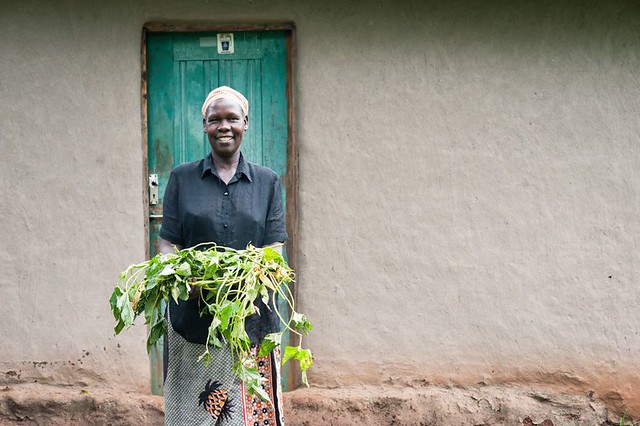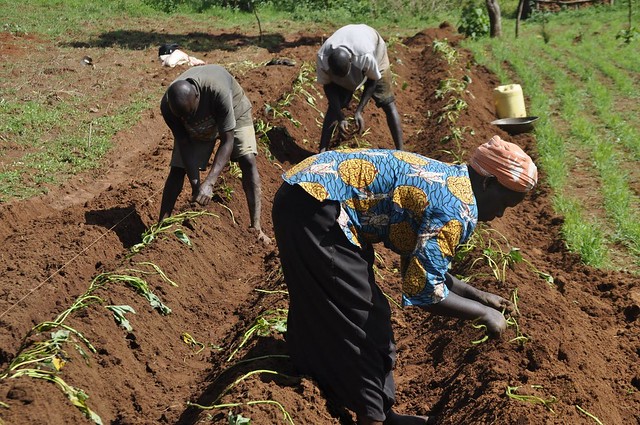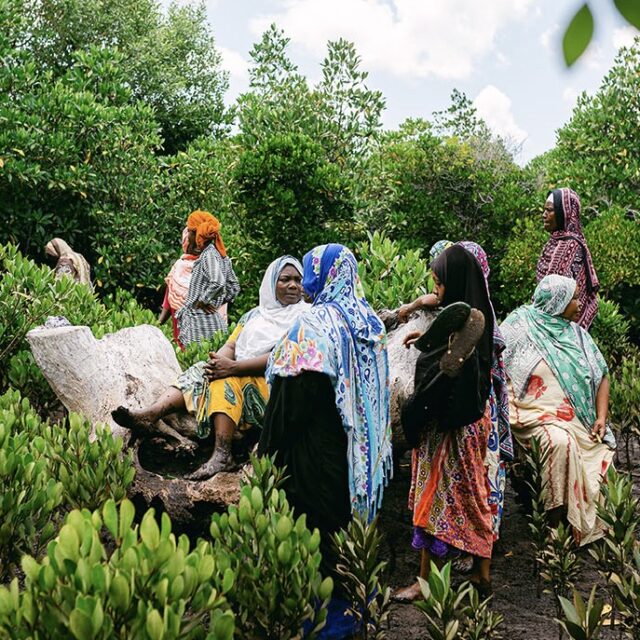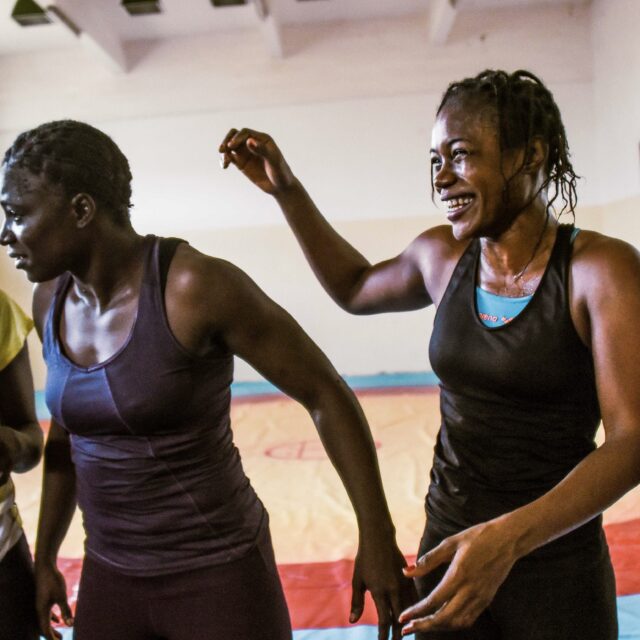In partnership with One Acre Fund, we are following Anne, a smallholder farmer from Kenya, for a whole growing season. From planting to harvest, we will check in every month to see what life is really like for a farmer in rural Kenya. Written by Hailey Tucker.
For the 2013 season, One Acre Fund offered each of its Kenyan farmers more than 400 live sweet potato vines to plant and harvest.

Anne with her new orange-flesh sweet potato plants. Photo credit: One Acre Fund
Anne was especially excited to receive her sweet potato vines. Her mother used to grow sweet potatoes every year, and Anne usually plants a small plot of sweet potatoes. However, Anne expects these potatoes to be different.
The vines will produce orange-fleshed sweet potatoes, opposed to the pale white ones she and her mother have grown. Orange-fleshed sweet potatoes are superior to white ones, because they provide important nutrients like Vitamin C, A and B6.
The One Acre Fund planting method for the potatoes is different than the one that Anne has used in the past. It includes techniques she has never tried before.
“I am very curious to see how the potatoes will perform so I can compare between my previous potatoes and these,” Anne says. “I expect these will perform well,” she says while sorting through the vine cuttings with her hands, removing any that look wilted.
The One Acre Fund method for planting sweet potatoes encourages farmers to create ridges and plant the vines along the tops of each ridge. Anne previously had planted her sweet potatoes in mounds.

Anne experiments with planting the sweet potatoes in ridges. Photo credit: One Acre Fund.
“This planting method of using ridges, I saw it a long time ago with my mother, but the way the vines are planted on the ridge is different from how she used to do it,” Anne says. “One Acre Fund has told me to plant the vines on the top of the ridge. My mother used to plant them along the sides.”
Anne received her sweet potato vines May 6th and planted them with her two oldest sons on May 13th. They planted the vines in a plot of Anne’s land near the church where Isaac, her husband, preaches.
Anne says the new planting method was not too difficult and that she expects harvesting the potatoes out of the ridges will be easier than harvesting them out of the mounds she is used to.
She has tasted orange-flesh sweet potatoes before and says that they taste different to her than the variety she usually grows.
“I don’t mind if they are orange or white because they’re both potatoes, and they’re both edible!” Anne says. “The orange ones taste very sweet to me. They taste like sugar.”
Anne will harvest her sweet potatoes sometime in August. We’ll share the results of her harvest with you in a few months!
Meanwhile, here are a few more answers to the questions you submitted to Anne in May.
Marietta asked: Anne, do the small farmers share or have access to an ox in order to plough the soil?
Anne: “This year I used two oxen for the first tilling of my land and then did the second by hand. I rented the oxen for one day at the price of 1,000 Ksh ($12 USD) for the day. When I clear by hand, it takes me one week from 8:30 a.m. to 12 p.m. to clear the same land.”
Karen E Van Buskirk asked: Hello Anne in Kenya! I’ll pray that you will have a great year with your crops. What tools do you use?
Anne: “The tool I use the most is a jembe (hoe). My land is free of trees, so I don’t don’t need a panga (machete) of anything other tool to cut anything down. I use the jembe to till my land, break up the soil and make rows and ridges for planting.”


